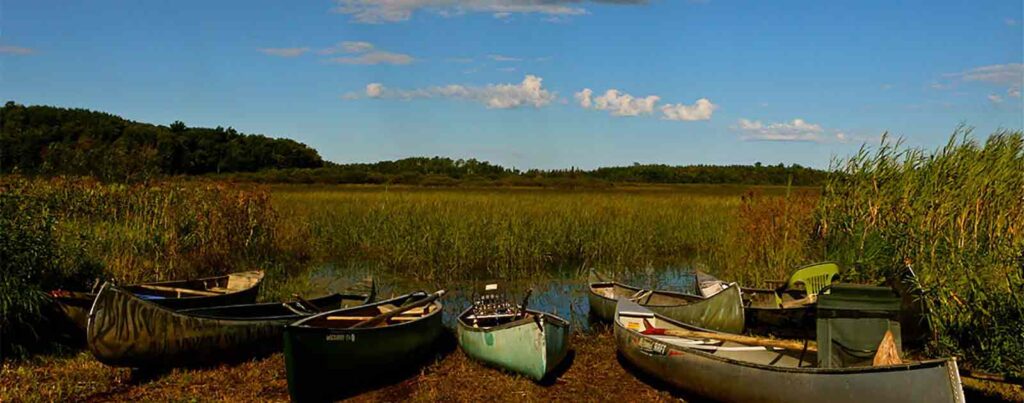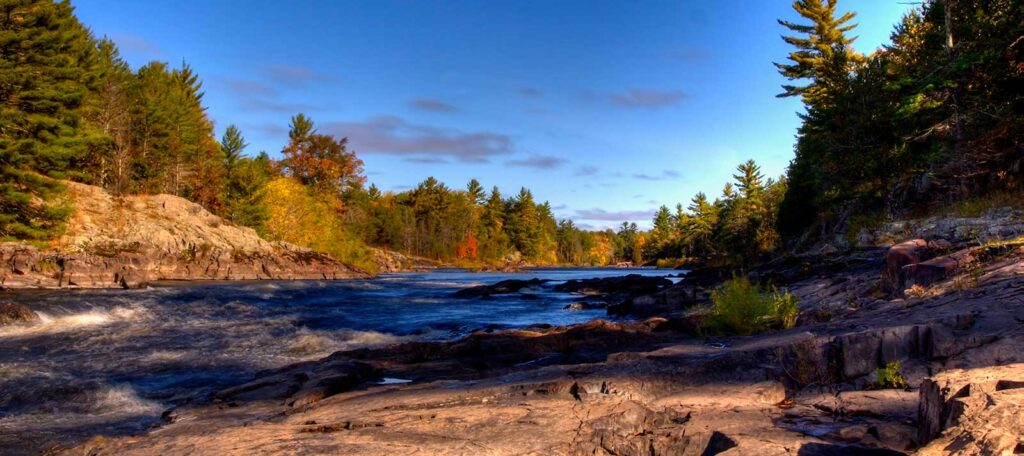Saving the St. Louis River
The St. Louis River is threatened by potential contamination from sulfide-ore mining. A local resident discusses the need to look into the past and learn important lessons in order to save the St. Louis River today.

Within the area of the Great Divide, the St. Louis River is the primary river of northeast Minnesota that flows into Lake Superior. Adjacent waters flow north into the Rainy River or south into the Mississippi.
As the St. Louis picks up volume due to the emptying of its many tributaries, the river flows through the Tribal Nation of Fond du Lac and forms a fresh water estuary as the river meets the Lake. The tributaries that feed into the St. Louis form a water filtration network that nourishes the forests and wetlands of Superior National Forest.
In the not-so-distant past of the early 1900’s, the Federal Weeks Act of 1911 provided for the addition of land to Superior National Forest for the purpose of protecting the headwaters of navigable streams. After a period of intense logging that cut down a hundred years of white pine in only thirty years’ time, national figures saw the need to manage lands in a way that valued the primary resources of woods and water.
For the remainder of the century, Superior National Forest gradually regenerated, although the white pine forests never returned. The parts of the forest surrounding what is now the Boundary Waters Canoe Area Wilderness came to serve as a buffer zone, protecting the quality and character of the area.
Then, in an unfortunate turn of events, something changed in the latter part of the 1900’s. A new mining process that crushed taconite rock into iron pellets made inroads into Superior National Forest and into the St. Louis River watershed. Now, the taconite industry is leaving behind a legacy of mercury and sulfates, impacting the fish, wild rice, and quality of the waters of the St. Louis River, and ultimately Lake Superior itself.
While state agencies scramble to find ways to clean up the water, the very same agencies are on the brink of permitting a new even more toxic kind of mining— for copper/nickel minerals in sulfide ore, which are highly dispersed throughout the bedrock of the area between Lake Superior, along the North Shore, and across to the Boundary Waters. Due to the low quality of these ores, the volume of waste rock will be astronomical.
A company known as PolyMet is the first in line for permitting, and would be mining 99 percent waste rock at their project site. Meanwhile, there is no known sulfide ore mine that has been able to prevent water contamination from acid mine drainage and toxic heavy metals, which lasts for centuries.
Recent government leaders have relinquished the lessons learned by their predecessors. They are falling for mining company propaganda that claims their mines will not impact the environment in any negative way— a foolhardy statement that flies in the face of both science and on-the-ground reality. No research has even proven the claims that all such metals are needed in order to keep afloat our reliance on current technologies.
So while the city of Duluth is seeking approximately $70 million to clean up a U.S. Steel superfund site along the St. Louis River, our state agencies are promoting another onslaught of pollution within the upper reaches of the river.
The iconic beauty and quality of the St. Louis River watershed is at risk. Our agencies and leaders are ignoring the fact that clean water is a valuable natural resource. We have lost respect for the quality and character of Lake Superior itself; we have forsaken the generations who will follow us. Who will rise up and step forward from within the ranks of bureaucracy in time to save us from ourselves?



